Writes all the things. Reads all the things. Words = Life. She/Her
Don't wanna be here? Send us removal request.
Text
A Guide to Historically Accurate Regency-Era Names

I recently received a message from a historical romance writer asking if I knew any good resources for finding historically accurate Regency-era names for their characters.
Not knowing any off the top of my head, I dug around online a bit and found there really isn’t much out there. The vast majority of search results were Buzzfeed-style listicles which range from accurate-adjacent to really, really, really bad.
I did find a few blog posts with fairly decent name lists, but noticed that even these have very little indication as to each name’s relative popularity as those statistical breakdowns really don't exist.
I began writing up a response with this information, but then I (being a research addict who was currently snowed in after a blizzard) thought hey - if there aren’t any good resources out there why not make one myself?
As I lacked any compiled data to work from, I had to do my own data wrangling on this project. Due to this fact, I limited the scope to what I thought would be the most useful for writers who focus on this era, namely - people of a marriageable age living in the wealthiest areas of London.
So with this in mind - I went through period records and compiled the names of 25,000 couples who were married in the City of Westminster (which includes Mayfair, St. James and Hyde Park) between 1804 to 1821.
So let’s see what all that data tells us…
To begin - I think it’s hard for us in the modern world with our wide and varied abundance of first names to conceive of just how POPULAR popular names of the past were.
If you were to take a modern sample of 25-year-old (born in 1998) American women, the most common name would be Emily with 1.35% of the total population. If you were to add the next four most popular names (Hannah, Samantha, Sarah and Ashley) these top five names would bring you to 5.5% of the total population. (source: Social Security Administration)
If you were to do the same survey in Regency London - the most common name would be Mary with 19.2% of the population. Add the next four most popular names (Elizabeth, Ann, Sarah and Jane) and with just 5 names you would have covered 62% of all women.
To hit 62% of the population in the modern survey it would take the top 400 names.
The top five Regency men’s names (John, William, Thomas, James and George) have nearly identical statistics as the women’s names.
I struggled for the better part of a week with how to present my findings, as a big list in alphabetical order really fails to get across the popularity factor and also isn’t the most tumblr-compatible format. And then my YouTube homepage recommended a random video of someone ranking all the books they’d read last year - and so I present…
The Regency Name Popularity Tier List
The Tiers
S+ - 10% of the population or greater. There is no modern equivalent to this level of popularity. 52% of the population had one of these 7 names.
S - 2-10%. There is still no modern equivalent to this level of popularity. Names in this percentage range in the past have included Mary and William in the 1880s and Jennifer in the late 1970s (topped out at 4%).
A - 1-2%. The top five modern names usually fall in this range. Kids with these names would probably include their last initial in class to avoid confusion. (1998 examples: Emily, Sarah, Ashley, Michael, Christopher, Brandon.)
B - .3-1%. Very common names. Would fall in the top 50 modern names. You would most likely know at least 1 person with these names. (1998 examples: Jessica, Megan, Allison, Justin, Ryan, Eric)
C - .17-.3%. Common names. Would fall in the modern top 100. You would probably know someone with these names, or at least know of them. (1998 examples: Chloe, Grace, Vanessa, Sean, Spencer, Seth)
D - .06-.17%. Less common names. In the modern top 250. You may not personally know someone with these names, but you’re aware of them. (1998 examples: Faith, Cassidy, Summer, Griffin, Dustin, Colby)
E - .02-.06%. Uncommon names. You’re aware these are names, but they are not common. Unusual enough they may be remarked upon. (1998 examples: Calista, Skye, Precious, Fabian, Justice, Lorenzo)
F - .01-.02%. Rare names. You may have heard of these names, but you probably don’t know anyone with one. Extremely unusual, and would likely be remarked upon. (1998 examples: Emerald, Lourdes, Serenity, Dario, Tavian, Adonis)
G - Very rare names. There are only a handful of people with these names in the entire country. You’ve never met anyone with this name.
H - Virtually non-existent. Names that theoretically could have existed in the Regency period (their original source pre-dates the early 19th century) but I found fewer than five (and often no) period examples of them being used in Regency England. (Example names taken from romance novels and online Regency name lists.)
Just to once again reinforce how POPULAR popular names were before we get to the tier lists - statistically, in a ballroom of 100 people in Regency London: 80 would have names from tiers S+/S. An additional 15 people would have names from tiers A/B and C. 4 of the remaining 5 would have names from D/E. Only one would have a name from below tier E.
Women's Names
S+ Mary, Elizabeth, Ann, Sarah
S - Jane, Mary Ann+, Hannah, Susannah, Margaret, Catherine, Martha, Charlotte, Maria
A - Frances, Harriet, Sophia, Eleanor, Rebecca
B - Alice, Amelia, Bridget~, Caroline, Eliza, Esther, Isabella, Louisa, Lucy, Lydia, Phoebe, Rachel, Susan
C - Ellen, Fanny*, Grace, Henrietta, Hester, Jemima, Matilda, Priscilla
D - Abigail, Agnes, Amy, Augusta, Barbara, Betsy*, Betty*, Cecilia, Christiana, Clarissa, Deborah, Diana, Dinah, Dorothy, Emily, Emma, Georgiana, Helen, Janet^, Joanna, Johanna, Judith, Julia, Kezia, Kitty*, Letitia, Nancy*, Ruth, Winifred>
E - Arabella, Celia, Charity, Clara, Cordelia, Dorcas, Eve, Georgina, Honor, Honora, Jennet^, Jessie*^, Joan, Joyce, Juliana, Juliet, Lavinia, Leah, Margery, Marian, Marianne, Marie, Mercy, Miriam, Naomi, Patience, Penelope, Philadelphia, Phillis, Prudence, Rhoda, Rosanna, Rose, Rosetta, Rosina, Sabina, Selina, Sylvia, Theodosia, Theresa
F - (selected) Alicia, Bethia, Euphemia, Frederica, Helena, Leonora, Mariana, Millicent, Mirah, Olivia, Philippa, Rosamund, Sybella, Tabitha, Temperance, Theophila, Thomasin, Tryphena, Ursula, Virtue, Wilhelmina
G - (selected) Adelaide, Alethia, Angelina, Cassandra, Cherry, Constance, Delilah, Dorinda, Drusilla, Eva, Happy, Jessica, Josephine, Laura, Minerva, Octavia, Parthenia, Theodora, Violet, Zipporah
H - Alberta, Alexandra, Amber, Ashley, Calliope, Calpurnia, Chloe, Cressida, Cynthia, Daisy, Daphne, Elaine, Eloise, Estella, Lilian, Lilias, Francesca, Gabriella, Genevieve, Gwendoline, Hermione, Hyacinth, Inez, Iris, Kathleen, Madeline, Maude, Melody, Portia, Seabright, Seraphina, Sienna, Verity
Men's Names
S+ John, William, Thomas
S - James, George, Joseph, Richard, Robert, Charles, Henry, Edward, Samuel
A - Benjamin, (Mother’s/Grandmother’s maiden name used as first name)#
B - Alexander^, Andrew, Daniel, David, Edmund, Francis, Frederick, Isaac, Matthew, Michael, Patrick~, Peter, Philip, Stephen, Timothy
C - Abraham, Anthony, Christopher, Hugh>, Jeremiah, Jonathan, Nathaniel, Walter
D - Adam, Arthur, Bartholomew, Cornelius, Dennis, Evan>, Jacob, Job, Josiah, Joshua, Lawrence, Lewis, Luke, Mark, Martin, Moses, Nicholas, Owen>, Paul, Ralph, Simon
E - Aaron, Alfred, Allen, Ambrose, Amos, Archibald, Augustin, Augustus, Barnard, Barney, Bernard, Bryan, Caleb, Christian, Clement, Colin, Duncan^, Ebenezer, Edwin, Emanuel, Felix, Gabriel, Gerard, Gilbert, Giles, Griffith, Harry*, Herbert, Humphrey, Israel, Jabez, Jesse, Joel, Jonas, Lancelot, Matthias, Maurice, Miles, Oliver, Rees, Reuben, Roger, Rowland, Solomon, Theophilus, Valentine, Zachariah
F - (selected) Abel, Barnabus, Benedict, Connor, Elijah, Ernest, Gideon, Godfrey, Gregory, Hector, Horace, Horatio, Isaiah, Jasper, Levi, Marmaduke, Noah, Percival, Shadrach, Vincent
G - (selected) Albion, Darius, Christmas, Cleophas, Enoch, Ethelbert, Gavin, Griffin, Hercules, Hugo, Innocent, Justin, Maximilian, Methuselah, Peregrine, Phineas, Roland, Sebastian, Sylvester, Theodore, Titus, Zephaniah
H - Albinus, Americus, Cassian, Dominic, Eric, Milo, Rollo, Trevor, Tristan, Waldo, Xavier
& Men were sometimes given a family surname (most often their mother's or grandmother's maiden name) as their first name - the most famous example of this being Fitzwilliam Darcy. If you were to combine all surname-based first names as a single 'name' this is where the practice would rank.
*Rank as a given name, not a nickname
+If you count Mary Ann as a separate name from Mary - Mary would remain in S+ even without the Mary Anns included
~Primarily used by people of Irish descent
^Primarily used by people of Scottish descent
>Primarily used by people of Welsh descent
I was going to continue on and write about why Regency-era first names were so uniform, discuss historically accurate surnames, nicknames, and include a little guide to finding 'unique' names that are still historically accurate - but this post is already very, very long, so that will have to wait for a later date.
If anyone has any questions/comments/clarifications in the meantime feel free to message me.
Methodology notes: All data is from marriage records covering six parishes in the City of Westminster between 1804 and 1821. The total sample size was 50,950 individuals.
I chose marriage records rather than births/baptisms as I wanted to focus on individuals who were adults during the Regency era rather than newborns. I think many people make the mistake when researching historical names by using baby name data for the year their story takes place rather than 20 to 30 years prior, and I wanted to avoid that. If you are writing a story that takes place in 1930 you don’t want to research the top names for 1930, you need to be looking at 1910 or earlier if you are naming adult characters.
I combined (for my own sanity) names that are pronounced identically but have minor spelling differences: i.e. the data for Catherine also includes Catharines and Katherines, Susannah includes Susannas, Phoebe includes Phebes, etc.
The compound 'Mother's/Grandmother's maiden name used as first name' designation is an educated guesstimate based on what I recognized as known surnames, as I do not hate myself enough to go through 25,000+ individuals and confirm their mother's maiden names. So if the tally includes any individuals who just happened to be named Fitzroy/Hastings/Townsend/etc. because their parents liked the sound of it and not due to any familial relations - my bad.
I did a small comparative survey of 5,000 individuals in several rural communities in Rutland and Staffordshire (chosen because they had the cleanest data I could find and I was lazy) to see if there were any significant differences between urban and rural naming practices and found the results to be very similar. The most noticeable difference I observed was that the S+ tier names were even MORE popular in rural areas than in London. In Rutland between 1810 and 1820 Elizabeths comprised 21.4% of all brides vs. 15.3% in the London survey. All other S+ names also saw increases of between 1% and 6%. I also observed that the rural communities I surveyed saw a small, but noticeable and fairly consistent, increase in the use of names with Biblical origins.
Sources of the records I used for my survey:
Ancestry.com. England & Wales Marriages, 1538-1988 [database on-line].
Ancestry.com. Westminster, London, England, Church of England Marriages and Banns, 1754-1935 [database on-line].
13K notes
·
View notes
Text

Here's the first concept of my new protagonists! A faun mage and the girl she takes in who is learning so much about the world.
They still need names and that's my least favorite part! Comment with your ideas- winners will get updated here and in the comments.
152 notes
·
View notes
Text
We did a thing!
Another Pride and Prejudice episode!
"In this episode Meg and Kyera continue their Pride and Prejudice series by discussing their thoughts and feelings about the 1995 miniseries and the 2005 film. Prepare for some tangents, it was just one of those days."
2 notes
·
View notes
Text







Pride and prejudice (2005)
dir. joe wright
151 notes
·
View notes
Text



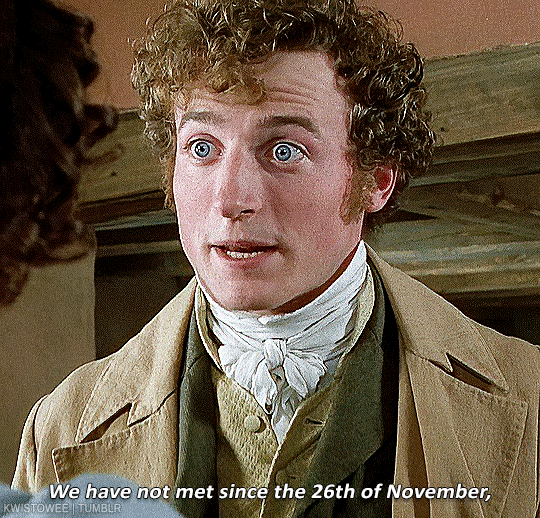
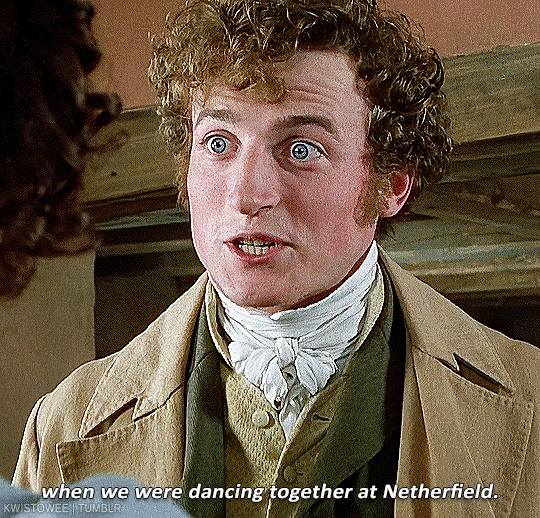
Happy Netherfield Ball Day PRIDE AND PREJUDICE (1995)
894 notes
·
View notes
Text
I love this person’s art so I’m sharing (again maybe?)

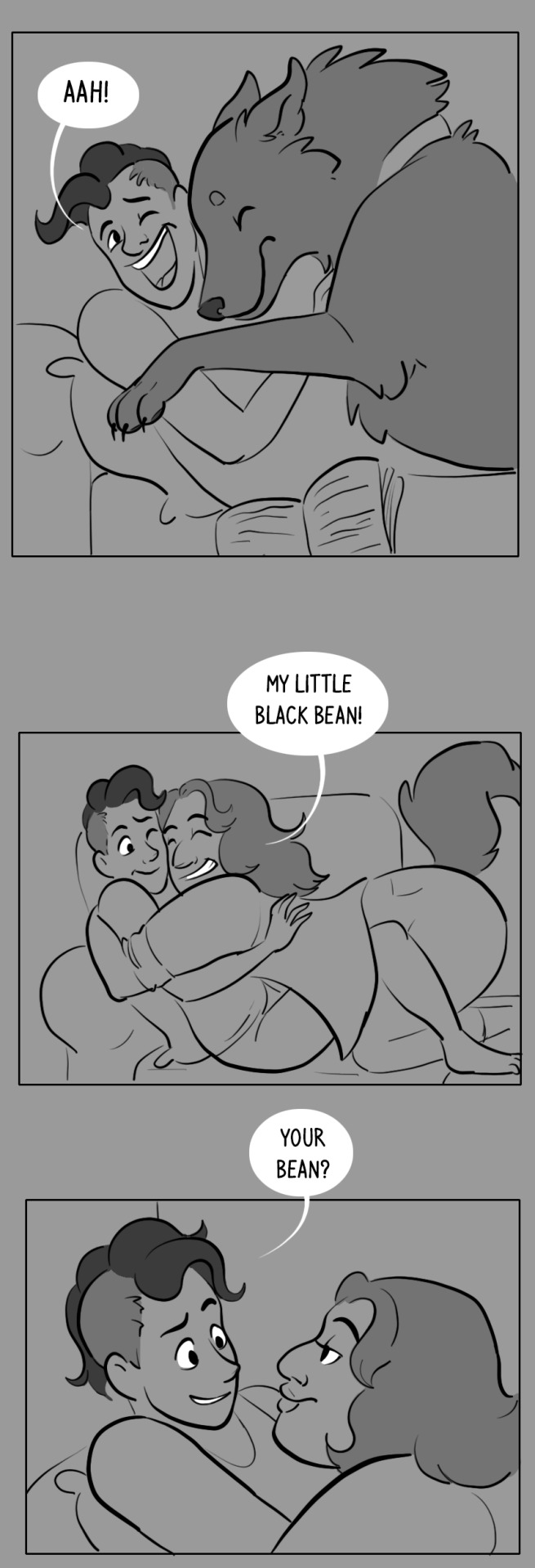

I had a cute little thought of what pet names Jazz and Sabine might call each other and decided to spend some time today throwing it together.
If you like the content I make, tips are always welcome on my Ko-fi!
3K notes
·
View notes
Text
My favourite format too.
obsessed with mass market paperbacks. their pleasing rectangular proportions. how they fit badly in a hoodie pocket so you can drag them around everywhere with you like a temporary little buddy. the way they fit in your hand because they're MADE for human hands and not as bookshelf decoration. the way the pages feel when you riffle them gently with your thumb. How pristine and crisp they look when you get them and how creased and folded they look when you're done, even if you try to be nice to them. how that wear is okay, how that's correct actually, because they're made with the philosophy that books aren't meant to be PRETTY, they're meant to be read. that little ripple new ones get on the left side from where you hold them when you're reading, the way the ripple only goes as far as you've read, because u change stories by reading as they are changing you. how you can find thousands of these creased and folded and loved little dudes in every thrift store and used book shop and neighborhood library and you can instantly see the ones that someone carried around in a backpack for weeks or read to pieces or gave up on halfway through because they wear being read like fresh snow wears footprints. I love these poorly made, subpar little rectangles so much. truly the people's books.
62K notes
·
View notes
Text
You are working the gate in the afterlife and for the first time ever, something the humans built has shown up to be processed. You’re not sure what to do, this… entity shouldn’t have a soul, but here it is in front of you, freshly dead and awaiting the next life.
39K notes
·
View notes
Text



I had a cute little thought of what pet names Jazz and Sabine might call each other and decided to spend some time today throwing it together.
If you like the content I make, tips are always welcome on my Ko-fi!
3K notes
·
View notes
Text
Seems like something we should all share to remind ourselves and others that it’s all okay.
Facts about your body after you turn 25, AKA things I wish someone had told me:
you will get hair in fun new places. this is normal and fine.
these places include (but are not limited to) if you don't already have them: your asscrack, your back, your ears, and moles. it's fine.
some of you, dick or not, will also lose hair. this is normal, but also if you have ovaries maybe get this checked out for PCOS.
your acne will probably change. some people get better. some people get worse. it's fine.
your nails will probably get an infection or a fungus at least once in your life. this is fine. (but also let your doc know).
how you gain and lose fat and where you do so will change. this is fine.
how you smell will change. this is fine. (fishy or rotten smells mean doctor time though)
if you have a prostate: it gets harder to pee. prostates enlarge as you age (get this checked regularly). this is fine.
if you do not have a prostate: it gets easier to pee but not in a good way. as in as you get older, your pelvic floor muscles tend to lose some of their strength. this makes it harder to keep pee in. this is fine.
all breasts and pectorals eventually sag, with the rest of your body. this is fine.
a decent percent of the population will experience a cyst at least once. some of you will make up for the rest with multiple. this is fine, but keep them checked out by a doctor. (sometimes this is a condition! get checked for that too!)
almost half of everyone gets hemorrhoids. it's a good idea to just expect them since your chances of getting them get higher the older you are. your toilet will look like a murder scene. definitely get your booty checked out BUT this is almost always perfectly normal. just eat more fiber. "but I already-" eat more fiber. and maybe suck it up and buy some hemorrhoid cream, you'll thank me later.
yes, this means you will probably need to make an appointment for a doctor to see your butthole. it's okay. not only do they really not care but 1. they've seen weirder that day and 2. they'd far rather you see them now than later when it's been going on for forty years and now it might be colon cancer. it's okay. consider it a rite of passage.
adults need more sleep than children. don't believe the myth that you need less than they do. that is capitalist propaganda to make you give up more of your life to the work grind, comrade.
vitamins and medicine, something you are more likely to take as you get older, sometimes make the toilet turn weird colors. it's okay.
if you still have your tonsils and get those little stones and get sore throats more than once a year you should plan on getting those suckers out before the tonsils cause an infection and go septic. if you're getting stones at all you should get those reevaluated every year, especially if the stones are bigger than a needlehead (or get bigger over time). it's gross and yucky. I don't care. get them looked at before you end up in the hospital.
you'll probably need to add foot support to your shoes if you don't already do. this is fine.
your body changes. sometimes it can feel sorta weird and upsetting that it isn't what it used to be. that is okay, and it is okay to be upset. just know that this is normal, it's normal to be upset or not upset, but don't let it hinder your quality of life. trans or cis, there is a certain level of acceptance you just gotta give your body and forgive your body for as you get older. it's okay.
it's okay. I promise.
76K notes
·
View notes
Text
All set up at Can-Con at the Sheraton in Ottawa. Drop on down and pick up a book!

0 notes
Text
Love the pictures but definitely not fat.
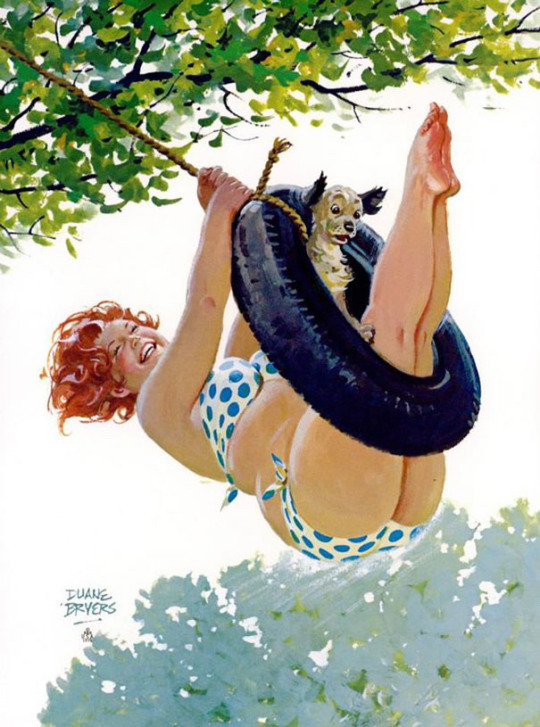

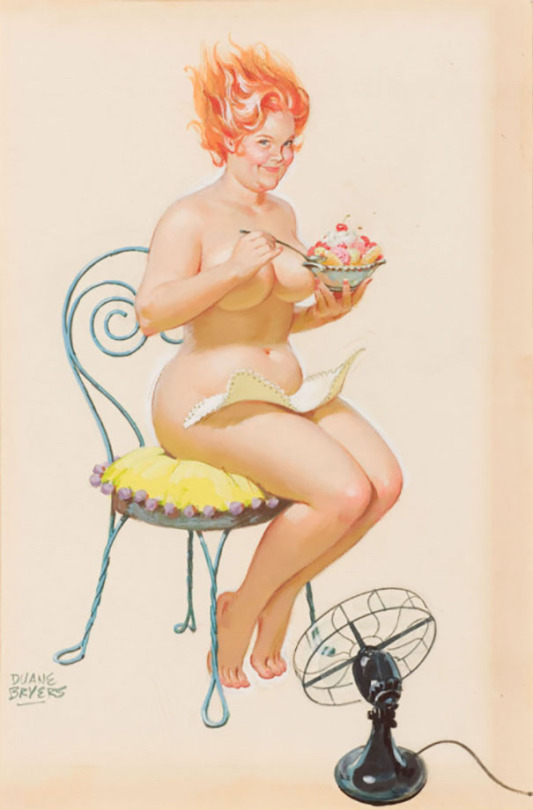
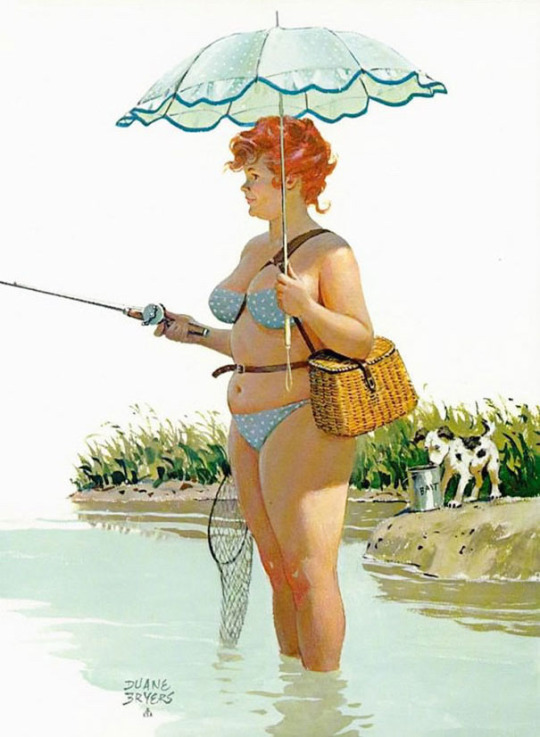

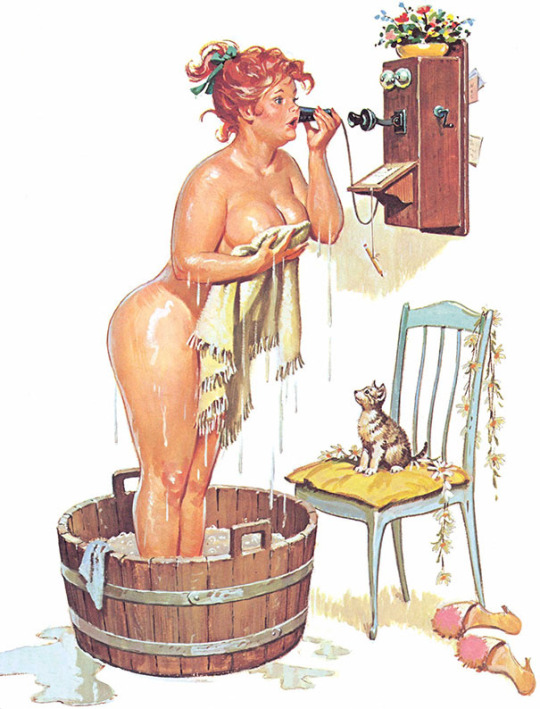
Hilda was a gorgeous & joyful pin-up character created by Illustrator Duane Bryer’s in the mid century. She was one of the only fat characters that gained popularity at the time, gracing calendars & the like from the 1950s through the 1980s.
3K notes
·
View notes
Note
Please read to the end. Great thoughts about redemption.
Perhaps people's issue with the Vader thing is that they misunderstand nature of redemption. People today (and a lot of half-baked redemption stories today too) like to think it's actually about someone who wasn't really that bad, just misguided/manipulated/traumatized doing something wrong, then fixing it and being their true self.
But actually, redemption is at its core is about an evil person becoming a good person. Redemption does not require sympathetic motives for the evil, nor for the evil person to deserve it (an oxymoron) or even for them to be able to make up for it. The foundation for redemption stories is that the redeemed person was evil.
Agreed.
827 notes
·
View notes
Photo




Please forgive me, I wrote this dumb joke in my drafts TWO YEARS AGO and I saw it today and cracked up. Seems appropriate since Dracula is everywhere, enjoy my failure to launch vampire romance.
If this made you laugh you could consider donating to my Ko fi or check out my Redbubble or Teepublic.
11K notes
·
View notes




